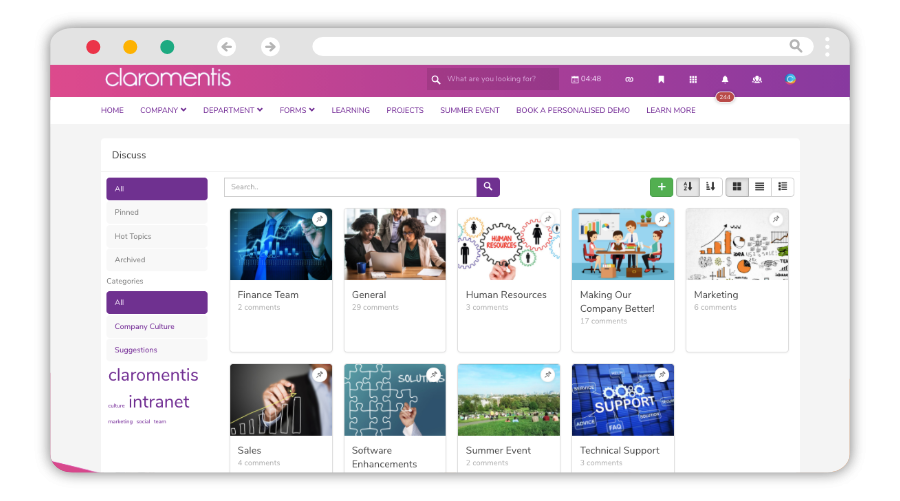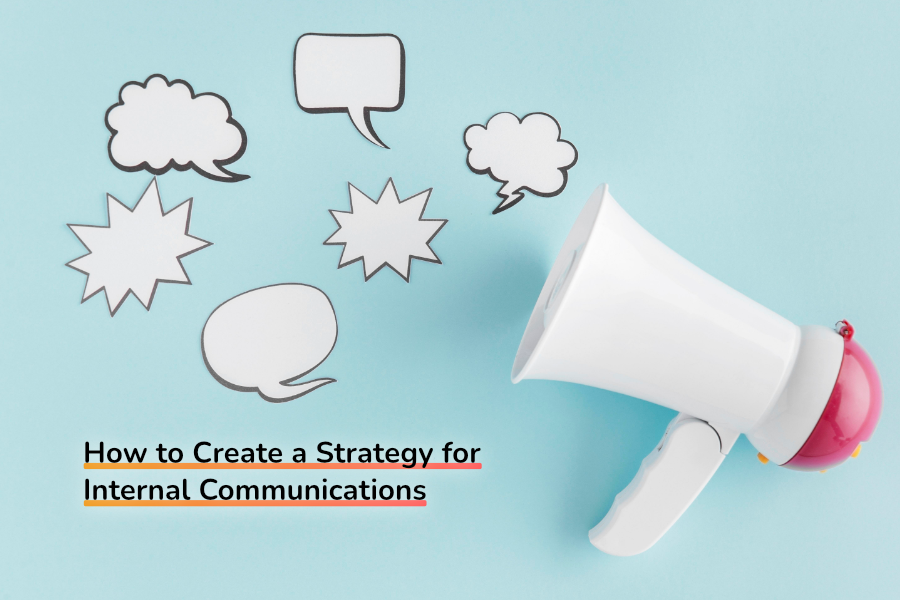A good internal communications strategy provides employees with the information, recognition and sense of belonging that will help them thrive in their jobs rather than just survive.
As well as being essential for operations, communication and collaboration, the best internal communications strategies work as a major employee engagement tool.
Engaged employees perform better and increase your revenue. On the other hand, disengaged employees are a significant cost drain – think 34% of their salary per year, at least.
Driving revenue via an engaged workforce relies on a well-thought-through internal communications strategy that leaves no-one out – from your CEO down to the newest member of your frontline team.
Below we have outlined 3 key areas for focus, to lay the groundwork:
![[FREE GUIDE] How To Align Your External and Internal Communication](https://no-cache.hubspot.com/cta/default/5025095/0964df73-d0da-4b46-a5bb-b215e96e0406.png)
1. Map out your internal communications goals
To create an internal communications strategy that works, you need to be clear on what problems you need it to solve.
You might notice that:
- Your teams are constantly confused about which rota is the most up-to-date, who’s off when and who needs to provide cover.
- Your HR department is so swamped with routine HR tasks that they can’t carry out strategic initiatives with a greater value add.
- Your employees are dissatisfied, disengaged and do not keep up with essential company developments.
- Employee turnover is high.
- Your senior management team doesn’t have much visibility on a ground level.
Prioritise these goals and then identify where your current internal communications processes are inadequate.
For example, you might be haemorrhaging employees to competitors and losing valuable operational knowledge. You find out that you haven’t addressed their unhappiness previously because you send employee satisfaction surveys via email and most of your workforce isn’t desk-based.
Alternatively, you might discover that on-the-ground teams frequently have two copies of a rota going round, with no-one sure which one is the right one. The team leader sends updates via text, but doesn’t have everyone’s contact details to hand and relies on word of mouth.
Both of these problems are damaging but solvable. It’s all about understanding how best to communicate with your workforce.

2. Make sure you can reach your entire workforce
In engaged workforces, employees can easily access:
- Company news
- Urgent updates
- Employee engagement surveys
- Awards and recognition
The problem is that so many companies are using outdated communications tools to share this information.
If you rely on email newsletters or other desktop-based communication channels, it’s more difficult for non desk-based employees to keep up. Meanwhile, workers without corporate email accounts are completely excluded.
To remedy this, you have two options:
- You can expand the range of channels you use for internal communications.
- You can consolidate internal communications into a tool that can reach everyone, regardless of where they work.
Expanding the range of channels you use adds more work for your HR team, and you introduce more opportunities for human error. Consolidating your internal comms into one channel, on the other hand, reduces HR workload and provides a single source of truth across the business.
Enter social intranets.
Social intranets function as private networks for your employees. In contrast to traditional company intranet sites, modern intranets:
- Are cloud-based and mobile so that employees of all types can access them.
- Are designed to mirror popular social networks with two-way publishing and social sharing features.
- Come with built-in collaboration tools such as discussion boards and forums.
- Can reach entire workforces quickly, thanks to push notifications and pinned alerts.
By way of example, our Announcements appear at the top of users’ homepages so important news reaches everyone quickly. You don’t have to rely on word of mouth, and you don’t risk urgent updates getting buried in people’s inboxes either. Everyone is informed instantly.

3. Compartmentalise Different Types of Communication
Whether using modern intranet or more traditional internal communications tools, it’s important to use the right channel for the type of message you want to send. Not every announcement will affect every employee, after all.
If you’re using traditional channels, you wouldn’t send out department-specific information on a company-wide email. If you’re using a social intranet, the same applies.
Ask yourself:
- Should a particular piece of information be published on the main feed or on a discussion board?
- Does it require a push notification? (If you send too many of these, employees will start to ignore them).
- When is the optimum time to publish?
- What sort of response are we expecting to this, and where should we direct people who have questions?
You might choose to publish best-practice advice on your discussion forums in the morning, for example, so that employees it is relevant to, can read it at the start of their day.
You could agree that push notifications should only be used in the case of urgent alerts, so that employees take notice when they receive them.
You might decide that a weekly shout out for top performance works well on the main feed on a Friday as a celebratory and motivational end to the working week.
A great intranet lets you set up dedicated channels for each of your teams to share best practice, talk about new ideas or provide feedback. This concentrates team-specific communications (such as rotas, cover, time off etc.), into one area, so that employees always know where to find it and it doesn’t flood your main feeds.

In summary, social intranets can provide the long-needed remedy to your outdated internal communications practices.
Compartmentalising messaging, relaying important announcements, increasing transparency, and strengthening employee engagement are critical to the smooth running of your internal communications, and are all made easier with the introduction of an intranet.





